Media | Articles
5 V-8s that reveal Cadillac at its best (and worst)
From the 1949 overhead valve V-8 engine influenced by Charles Kettering to the modern LT4-powered Blackwing cars that were essentially four-door Corvettes, Cadillac has always looked to outperform the competition when it comes to what’s under the hood.
In many ways, the arc of the Cadillac V-8 is a fitting embodiment of Theodore F. MacManus’ now-famous 1915 Cadillac ad, simply called “The Penalty of Leadership.” Not every engine innovation was a smashing success, but you’d be hard-pressed to knock the marque for resting on its laurels for more than a few years at a time.
Throughout numerous periods in the 20th century, folks bought a Cadillac because they had come to associate the brand with the idea of “class-leading” engines—whether that was actually the case or not. Let’s take a quick look at the best (and worst) of Cadillac V-8s, as illustrated by five examples found on the Hagerty Marketplace.
1951 Cadillac Series 62 Sedan
The 1949 Cadillac ushered a new era of overhead valve (OHV) V-8 engines with the 331-series engines. (Yes, Oldsmobile released its 303-cubic-inch Kettering/Rocket V-8 in the same year, so it isn’t terribly unique.)
Marketplace
Buy and sell classics with confidence
What made the 331 truly special was that it reached production at a time when flathead- and overhead-cam engines were the standard of the world (sorry) and took them all to school. The 331-cubic-inch Cadillac OHV motor was much lighter than the L-head, side-valve V-8 it replaced, with a superior powerband to boot.
A fine example of the 331 sits under the hood of this 1951 Series 62, which has remained mostly original thanks to being owned by a single family for its entire life. That one family stored this Caddy in a Detroit suburb for 45 years, but the listing states that it runs and drives thanks to an ignition tune up and a revitalized fuel and cooling system.
There’s a new battery and refreshed brakes, but the interior looks like it hasn’t been touched for decades, looking just as good as it did back in the 1950s!
1976 Cadillac Eldorado convertible
While the original 331-series did undergo a significant revision in 1963 with the debut of the 390-series, the new, larger engine wasn’t a clean-sheet redesign. That would arrive for the 1968 model year, which heralded the debut of the 472-series engine.
By the late-’60s, the power and displacement wars had reached a fever pitch in the luxury segment. Chrysler had a 440-cu-in big-block, and Lincoln went all-out with a unique 460-cu-in mill. Although the 472 topped both competitors from the outset, Cadillac went full mic-drop in 1970 when it punched the 472 out to a full 500 cubic inches of displacement.
Is the 500-cubic-inch mill the definition of “peak Cadillac,” and is the last factory-made Cadillac convertible the best place to enjoy said engine?
I’d like to think so, and this white-on-black example is a nice change from the white/red scheme found on the famous Bicentennial Edition. Not to mention this one has the original 500-cu-in engine, which was rebuilt 12 years ago and retains its fuel injection system.
According to the listing, the brakes have been refreshed and upgraded with bigger calipers, and a host of wear items (from wheel bearings to belts) have already been sorted out. The only flaw appears to be a need for refreshed cosmetics: Fresh paint and some rust repair might be in order.
No matter, this is about as subtle as you could get for a topless flagship before the entire genre met its maker the following year. That swan song identity is becoming more and more desirable to folks who love the automotive Malaise Era.
1987 Cadillac Allanté
If you’re reading this article, you probably already know how badly the HT-4100 “High Technology” series of engines tarnished Cadillac’s reputation. But the initial 4.1-liter motor was improved significantly over the years, and many of the issues were resolved by the time that the Allanté roadster debuted in 1987.
One of the biggest improvements was the addition of port fuel injection, as seen on the Allanté from day one. The HT-4100’s performance and reputation continued to improve with the addition of a 4.5-liter version in 1988 and a 4.9-liter version in 1991.
Everything that made the Allanté so special presents well on this example, and the conversion from full leather seating to a period-correct leather/cloth arrangement looks absolutely fantastic.
The seller’s assertion that this Allanté is “above average” sounds fair, as the photos and the recent work (tune up) combined with honest assessments of flaws (A/C needs a recharge, tachometer light went out, audio amplifier quit working) is nice to hear in a world of half-baked online descriptions.
1993 Cadillac Allanté
We previously went into detail about the last year of Allanté production, and the performance benefits over previous models is clear for all to see. One such improvement was replacing the HT-series of V-8 engines for the now-familiar Northstar V-8 with four camshafts and 32-valves in its arsenal.
Unfortunately, the Northstar’s legacy of questionable durability has also done the Allanté no favors. That said, this example with only 49,000 miles and a strong service history isn’t likely to fall victim to the problems that plagued more approachable Cadillacs with this engine.
This Allanté looks as clean as the mileage suggests, and includes new Michelin tires (on period-correct Seville wheels?), Arnott shocks (to replace the original electronic units that are now difficult to find) and even new components to restore the cruise control and power antenna.
There’s also a full set of repair manuals, which never hurts to have lying around—even in the internet age.
2017 Cadillac CTS-V
Sadly we didn’t have an example of Cadillac’s 4.2-liter, twin turbocharged CT6-V amongst our ranks. That motor, called the Blackwing, met a tragically early end for reasons we may never fully understand.
Instead, we found this snarling 2017 CTS-V with just 12,700 miles on the clock to make up for it. Let’s face it, isn’t the small-block, pushrod OHV engine design of the V-series more true to the 1949 original than anything else Cadillac could come up with?
In our eyes, the answer is most certainly yes.
This 2017 CTS-V proudly sports GM’s 6.2-liter supercharged LT4 V-8, which made 640 horsepower from the factory. The aftermarket conical air filter might net a couple more ponies, because when is more not better? Thankfully, road rash from all this speed is less likely thanks to a paint protection film.
The seller states this automatic-equipped CTS-V was color changed to a Mercedes-Benz Sunburst Yellow, and comes with a clean CarFax to prove a history free from collision repair.
While the definition of a Cadillac flagship V-8 has changed since 1949, it’s clear that the brand has plenty of performance to offer its most loyal fans.
Check out the Hagerty Media homepage so you don’t miss a single story, or better yet, bookmark it.

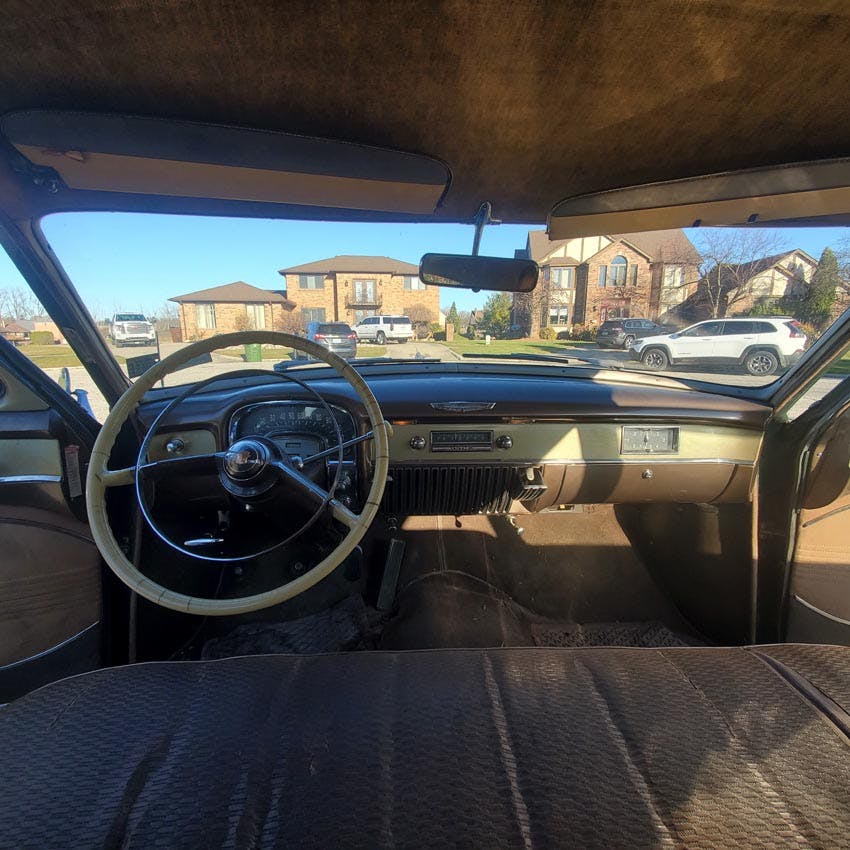


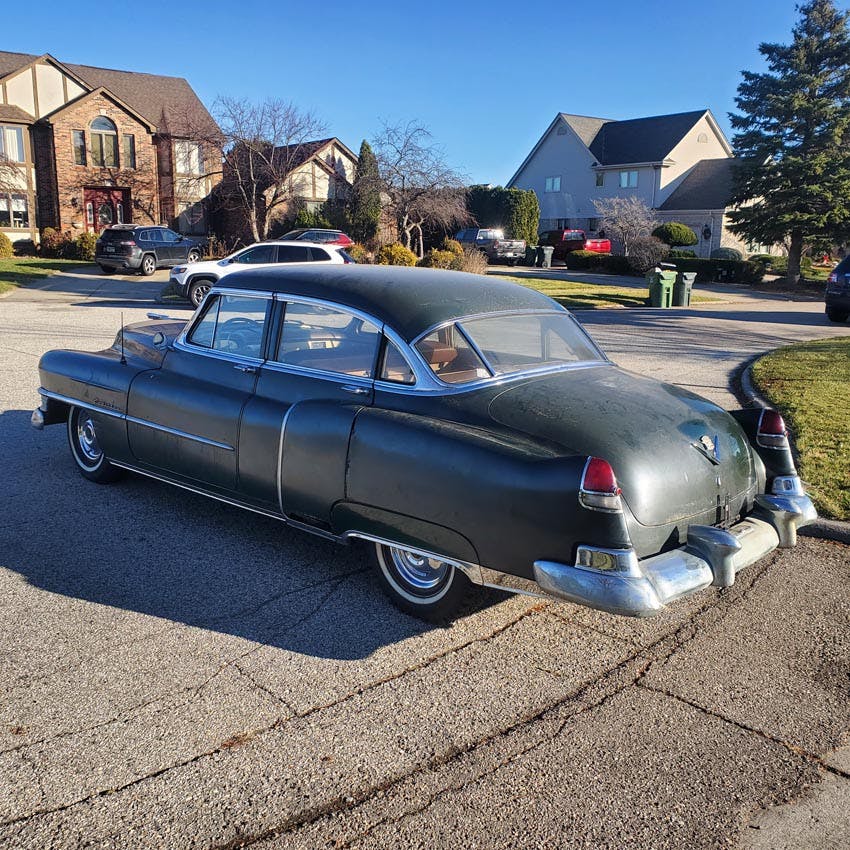
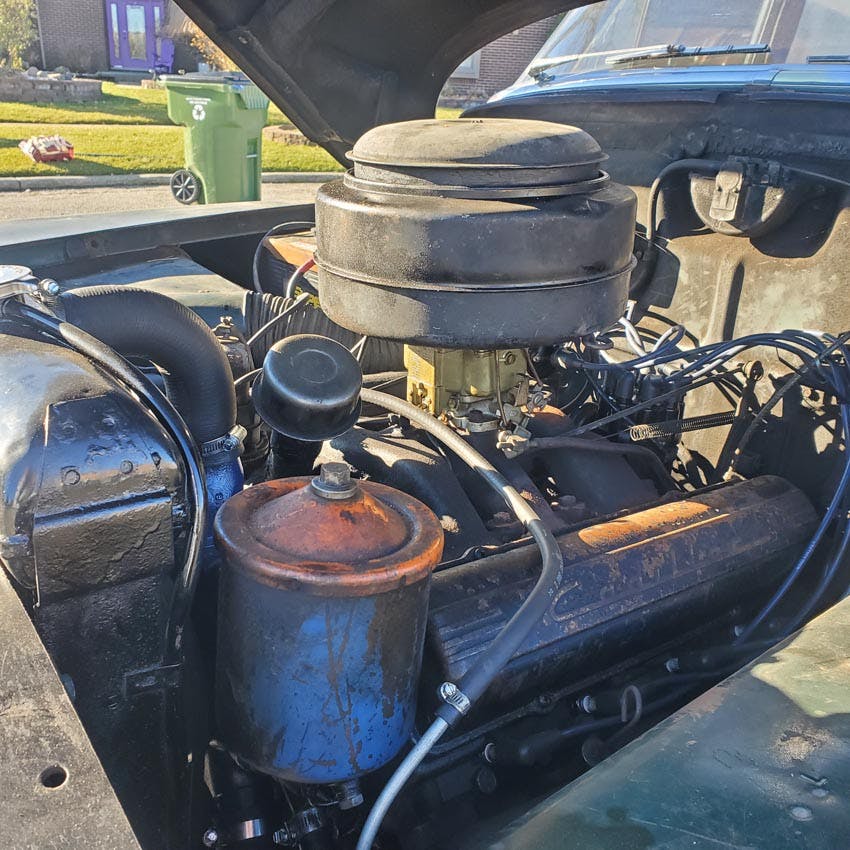
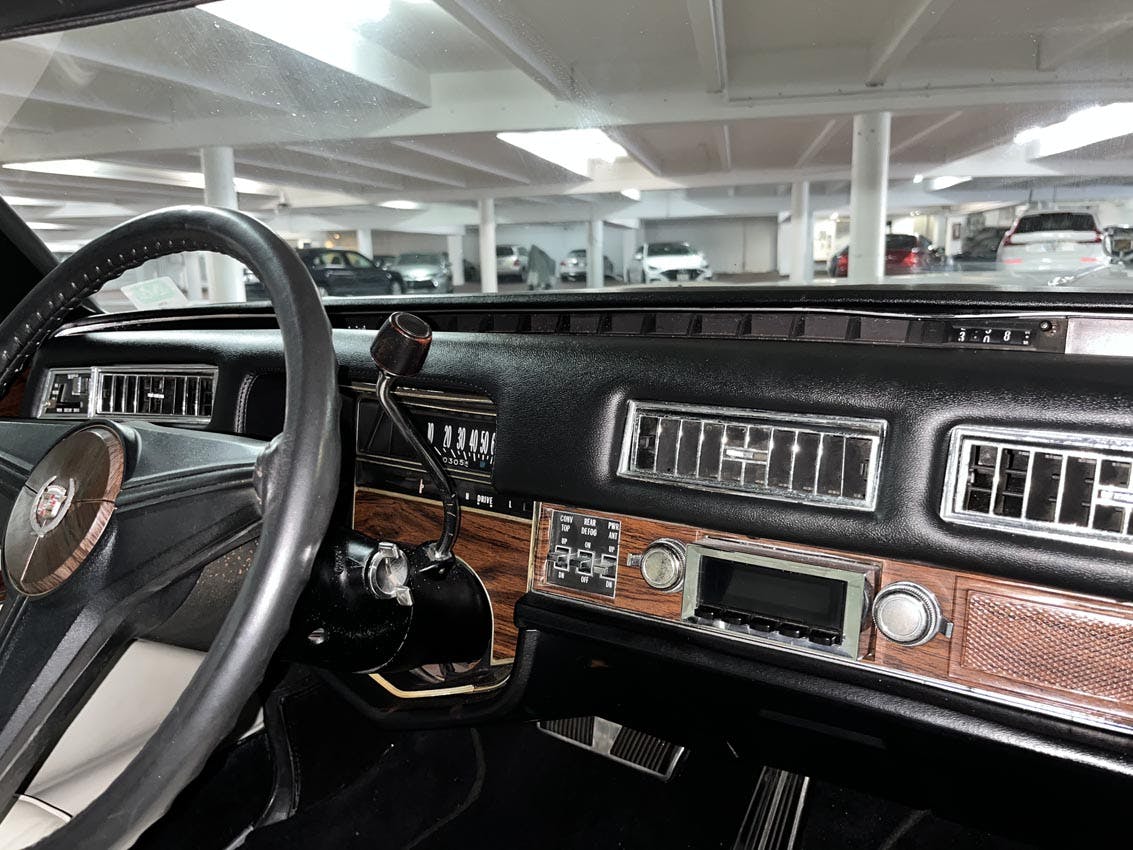
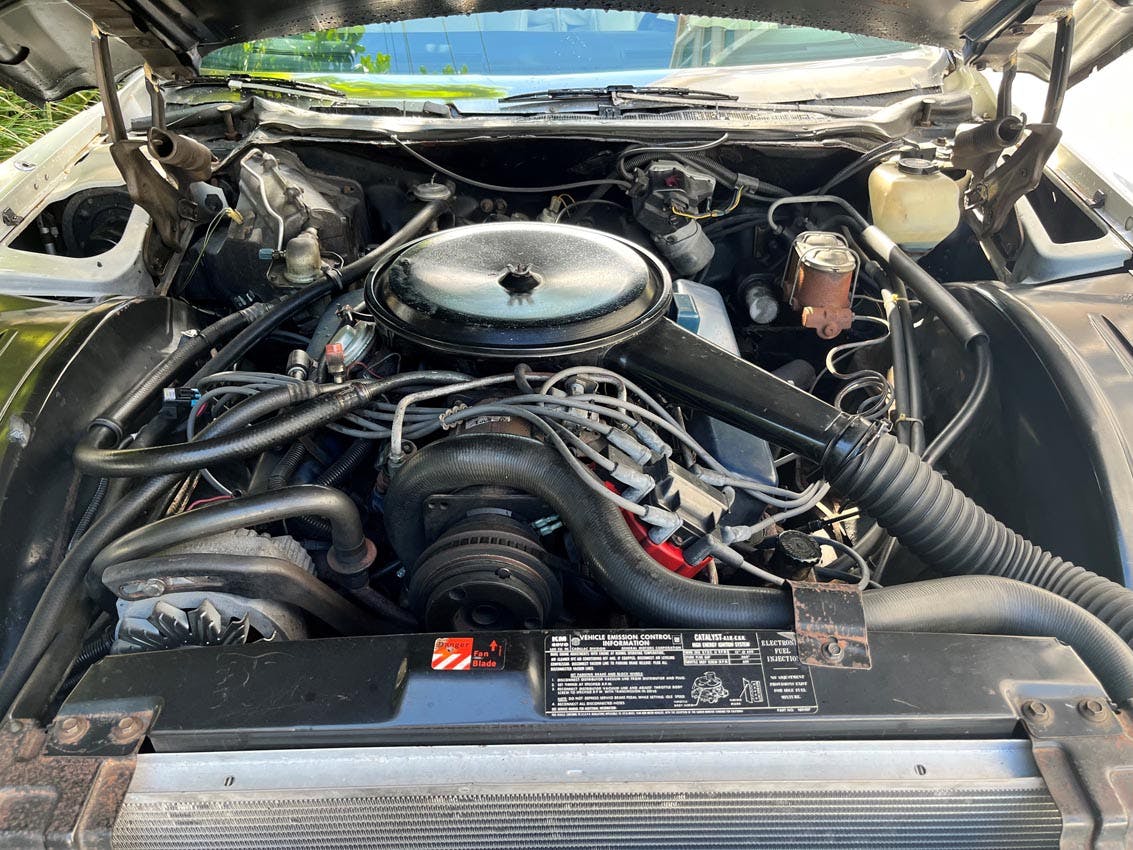
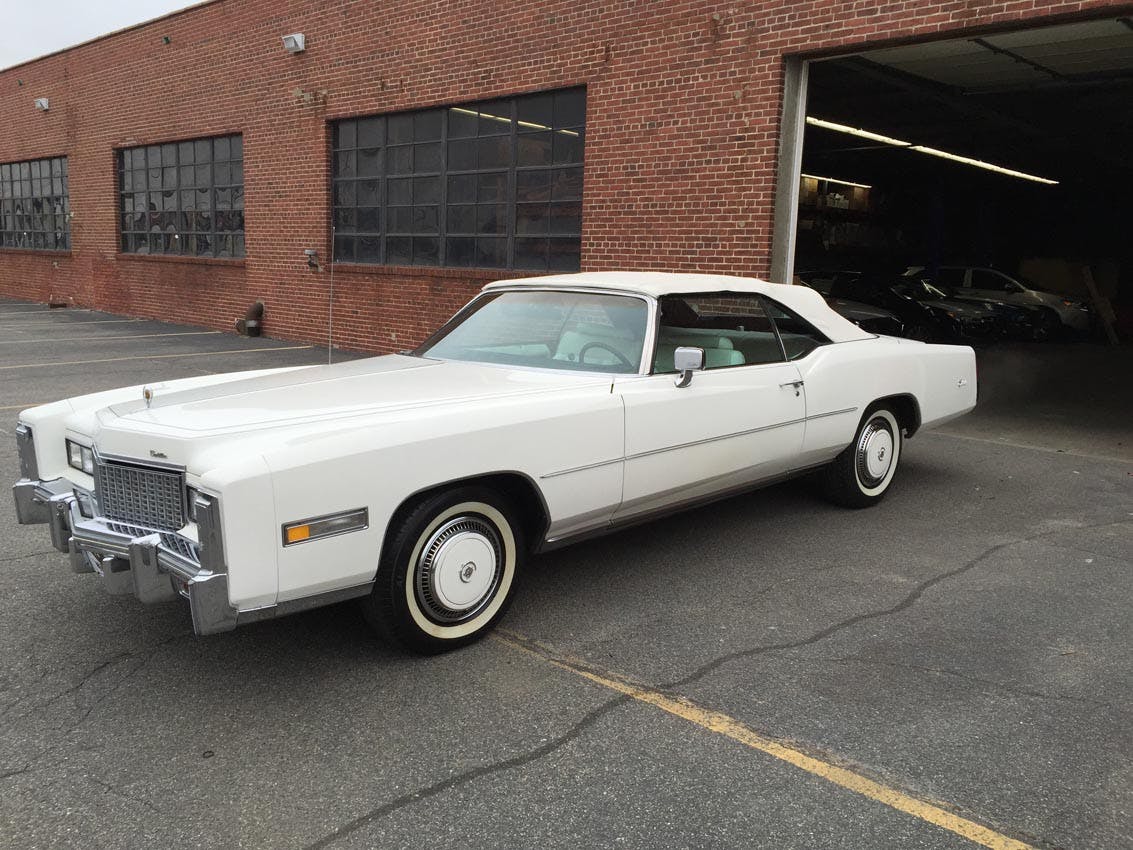

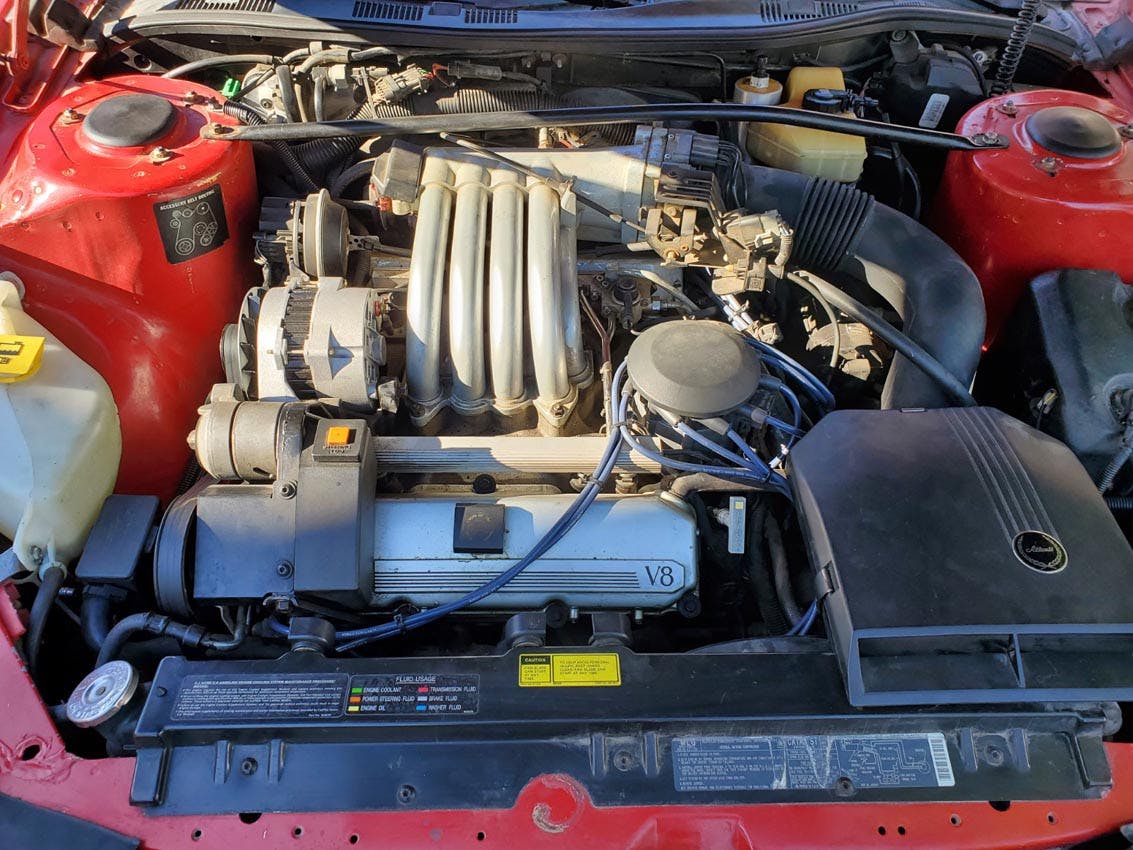
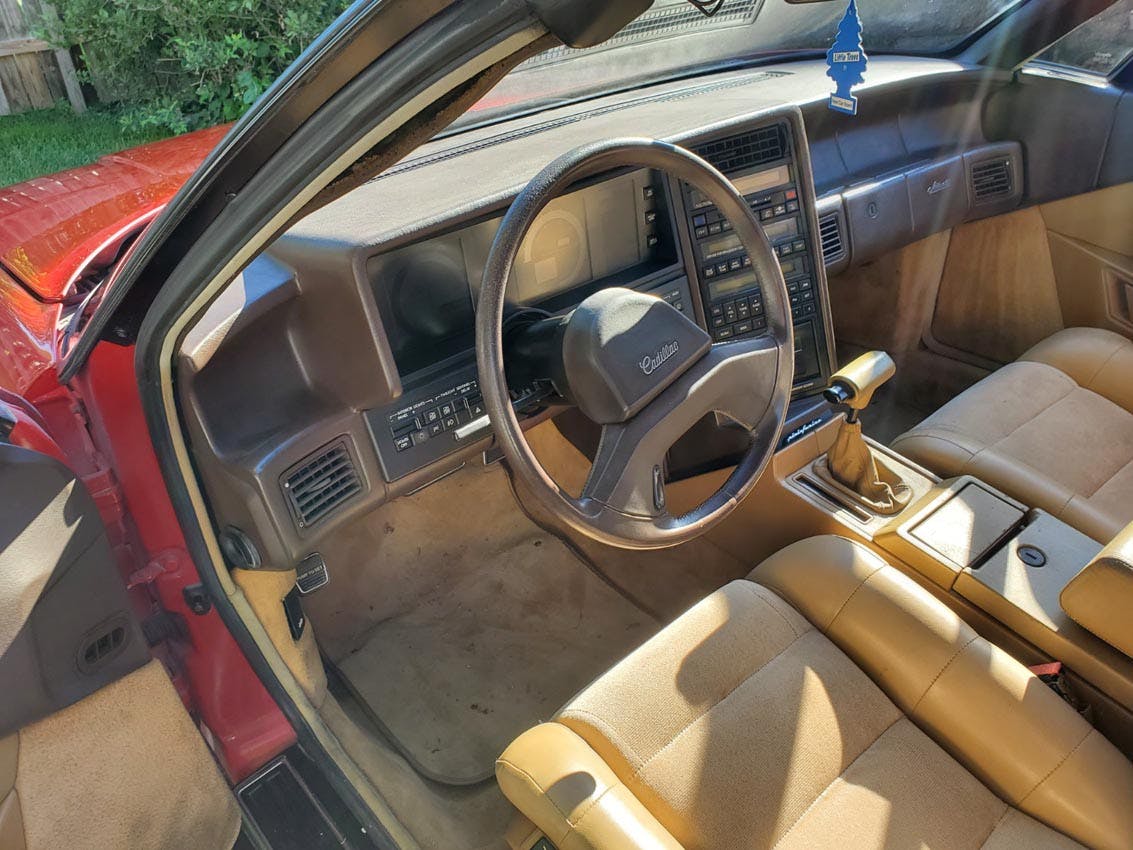
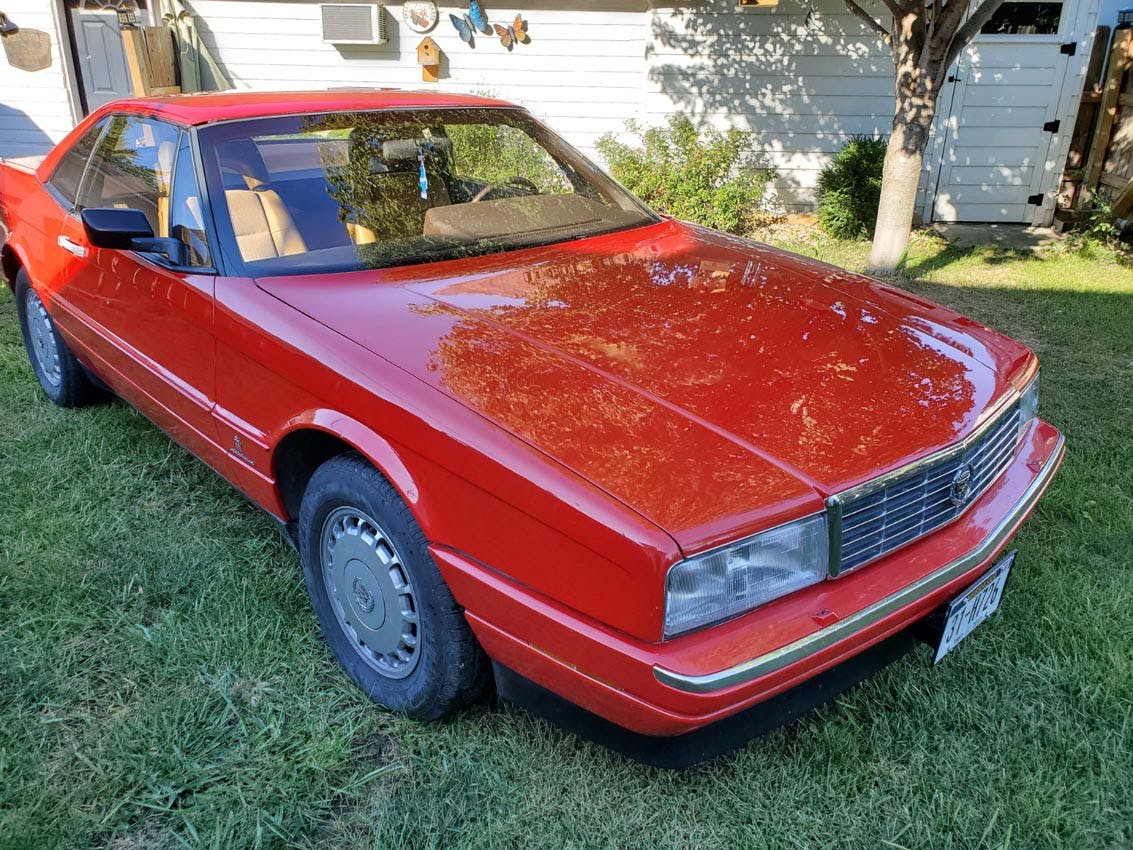
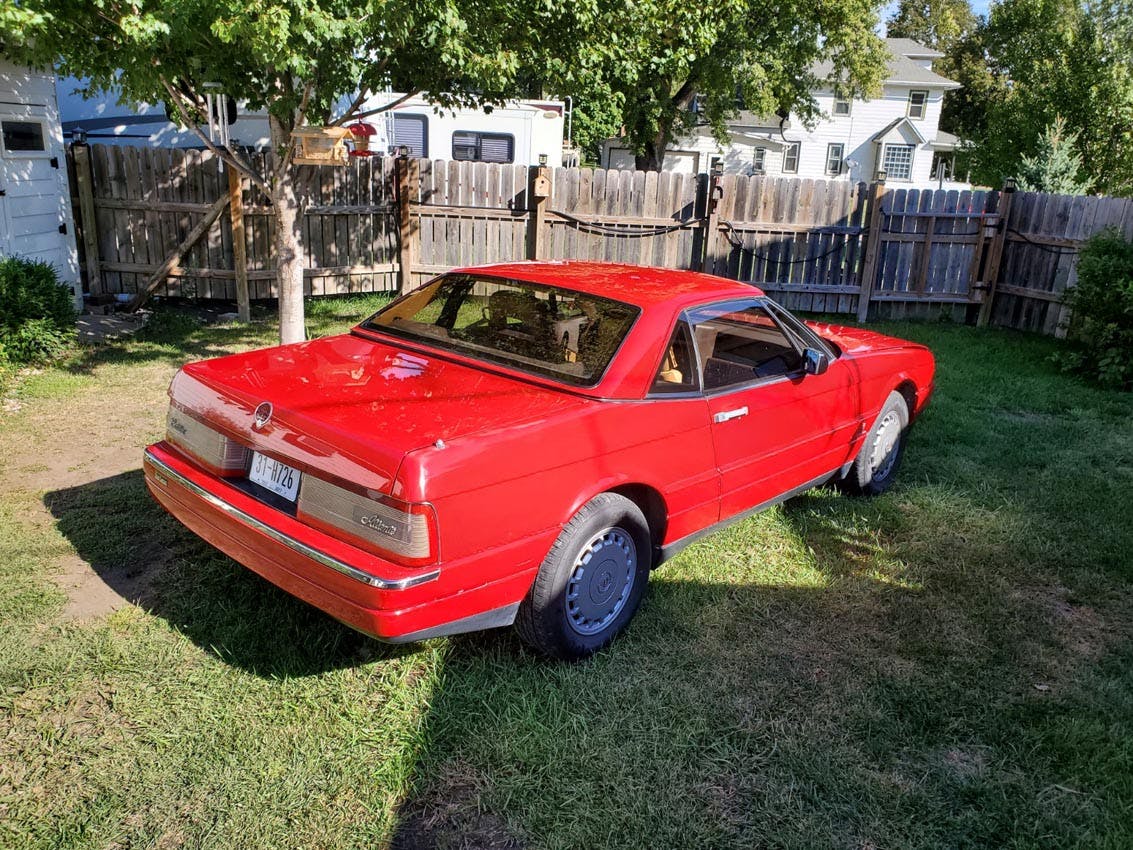

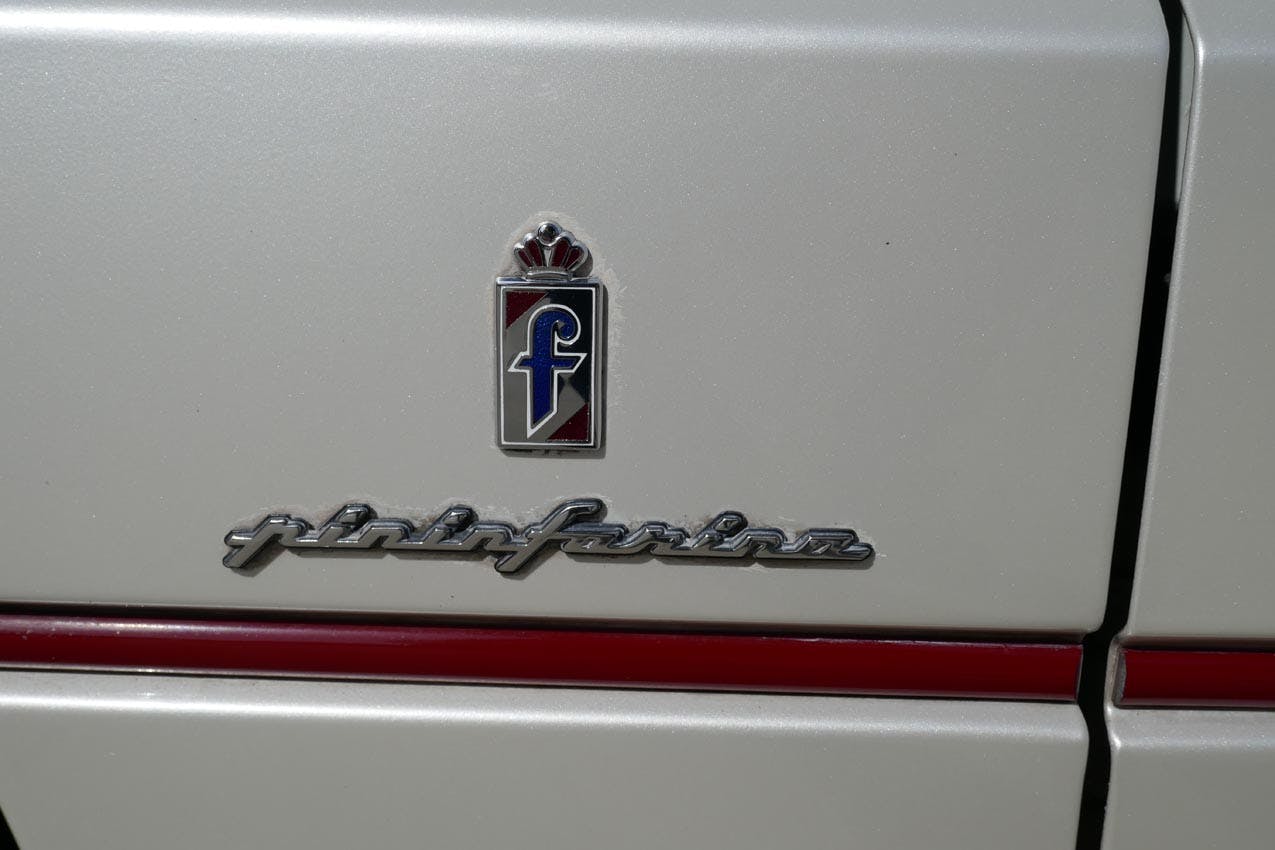
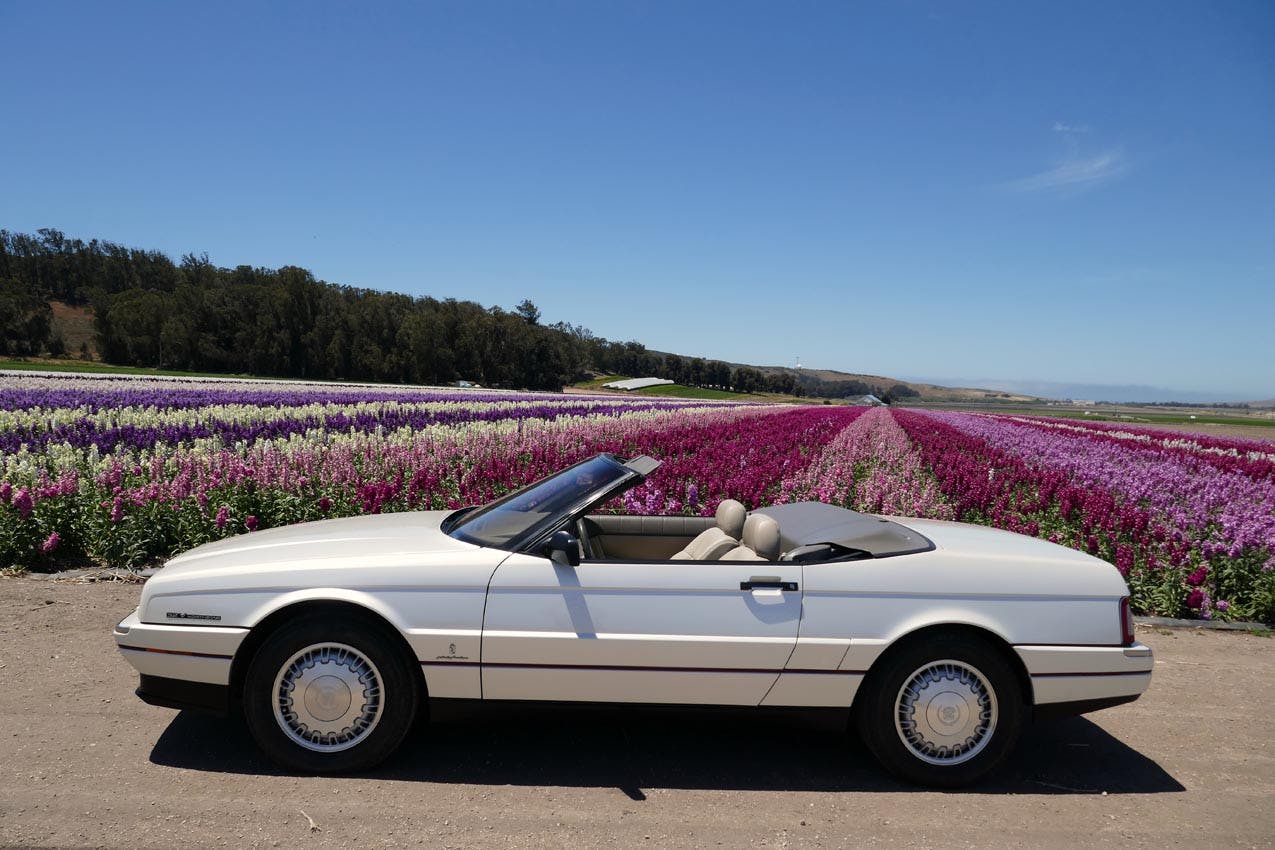
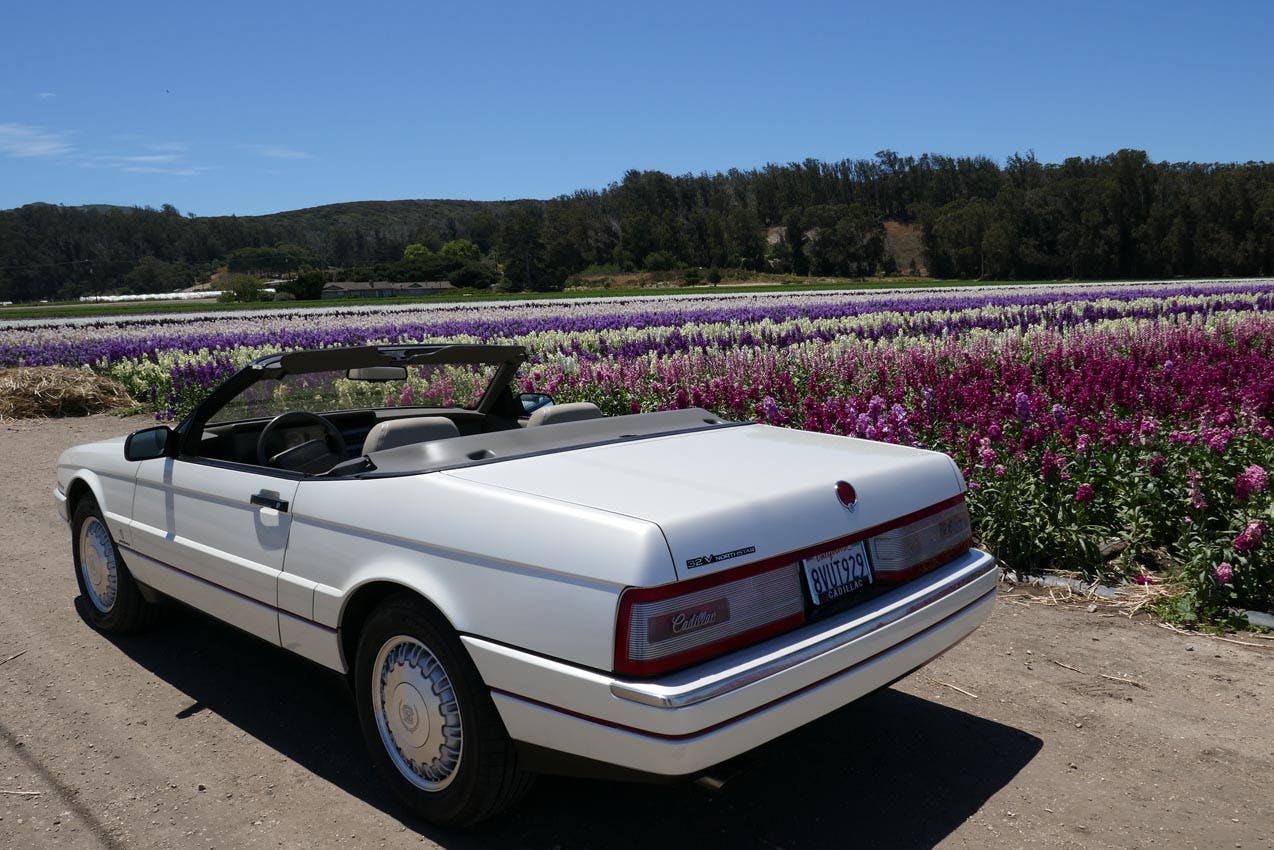


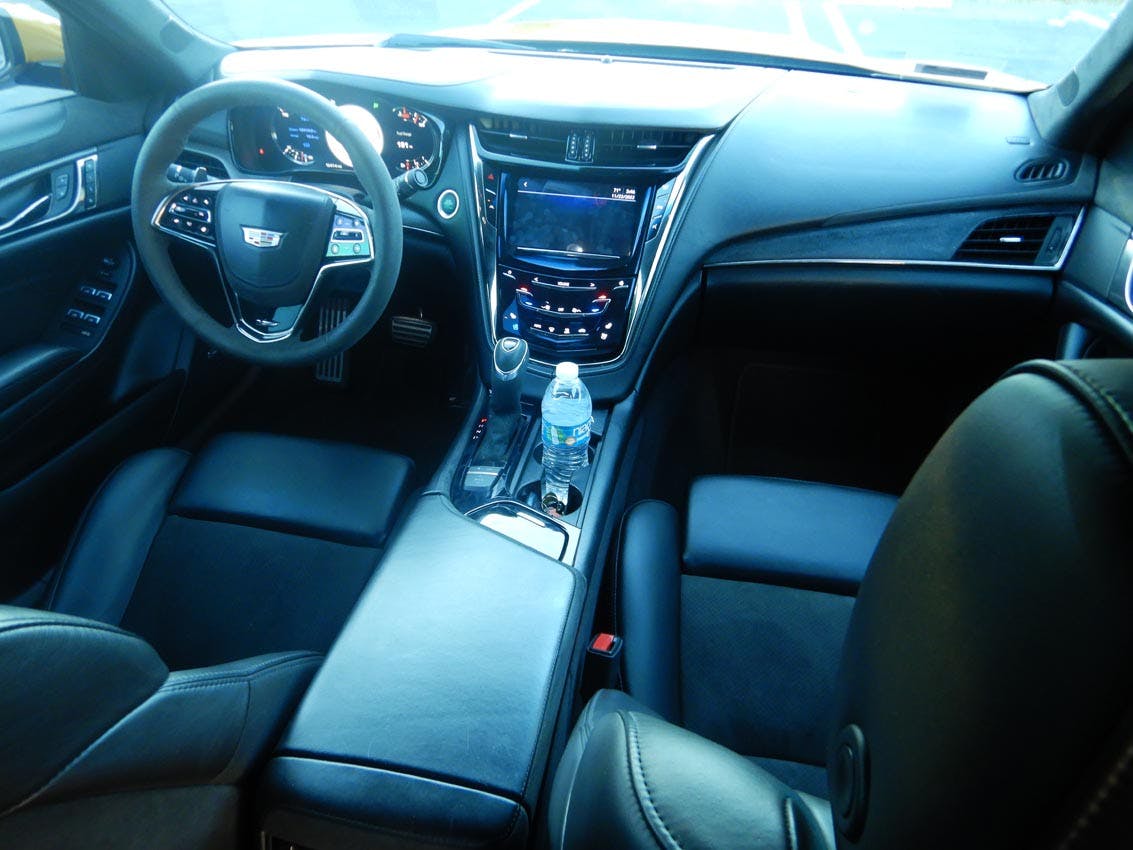
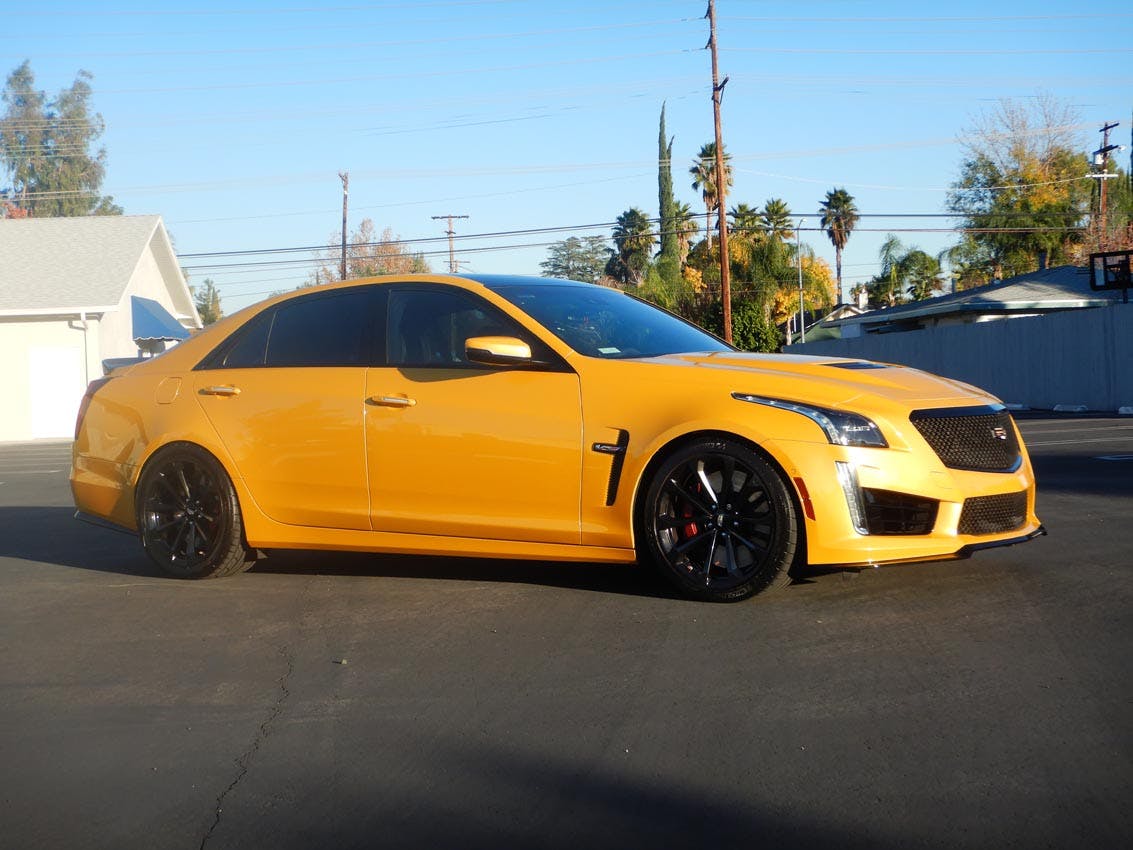
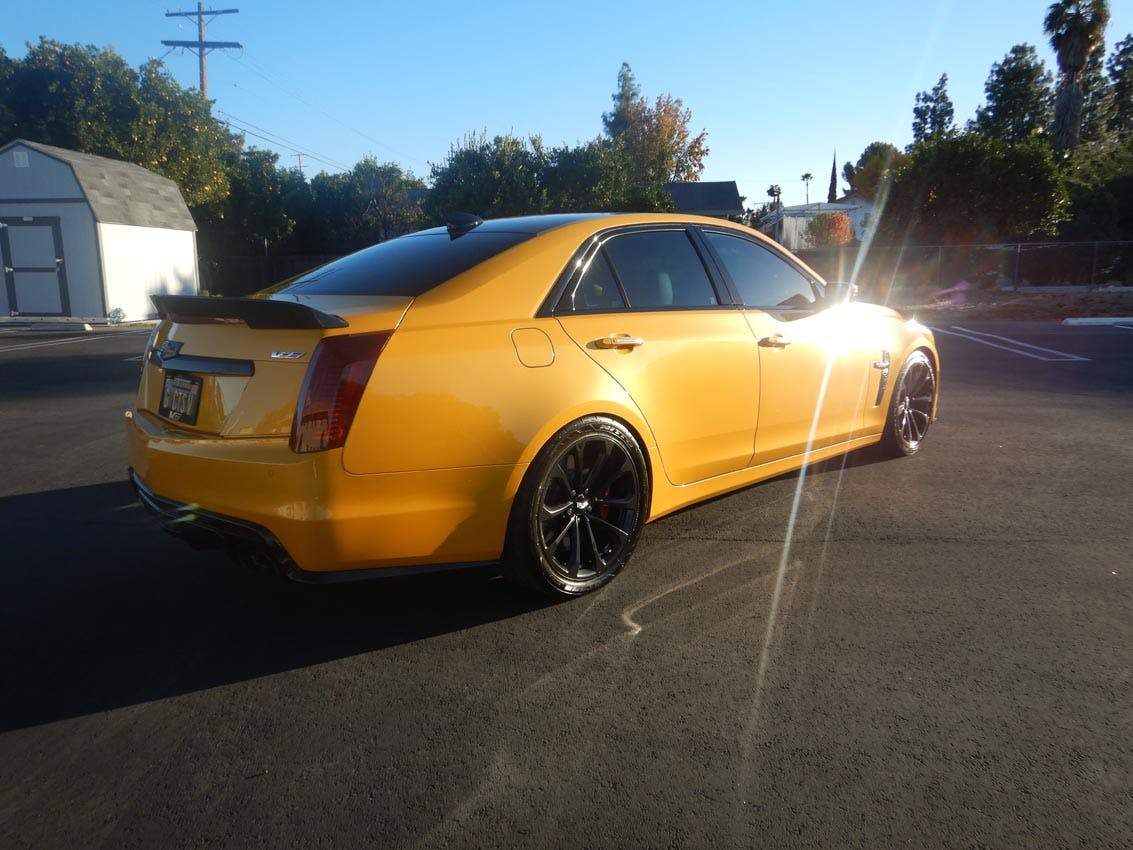
























As the owner of a 75 Eldorado convertible I agree that the 472/500 cid are special motors. They are both identical in appearance and with a little bit of tweaking are capable of much more power than stock and as a bonus they are very easy to work on, plus they can be picked for next to nothing.
The lil’ brother 425 was a solid performer in it’s own right and could haul a 6000 pound barge at a pretty good clip. I owned several examples over the years and took one to 290,000 miles before it gave up the ghost
The 500ci was stock 400 hp when it debuted in 1970. The 1970 Eldo that used it was one of the most beautiful cars GM ever produced IMO. GM detuned the crap out of that engine by the mid 1970’s to meet new pollution guidelines. But like you said, it is easily hot-rodded to restore performance.
I’m the proud owner of a 1974 Eldorado convertible and they are actually 501 cubic inches!
What about Cadillac’s flat-head Type 51 V-8 introduced way ahead of the game in 1914. In 1923, that engine evolved with the world’s first 90-degree crankshaft which yielded marked improvements in smoothness.
I made several engne swaps using 500 CID Cadillac engines. They are light for theier size, and make good power and great torque. The only weakness is the rocker arm supports, that tend to break with high rpm and stiff valve springs. The intake manifold design hurts power output, but aftermarket solutions are available for bot of these problems.
My 70 Eldorado has a stock 500 CID engine, and it moves the 4500 car pretty well, enough to sping both front tires if desired.
The most important Cadillac V8 is the first, in 1915. It made more power, with less weight, than the inline 6 and 8 cylinder cars of its day.
2nd most important Cadillac V8 is ca 1927, when they invented the 2 plane crankshaft. That made the V8 as smooth as the straight 8s used in other luxury cars.
3rd most important Cadillac V8 was the 1936 346 CID engine. It was the first engine, of any kind,to have hydraulic lifters. Earlier Cadillac V16 and V12 engines had hydraulically adjusted valves, built into the rocker arms, another Cadillac invention.
Given this legacy of V8 engines, why don’t Cadillacs have V8 engoines today, to build on this heritage and make them stand out against ther luxury cars? Why doesn’t Cadillac try to make themselves really “the standard of the world”?
Cadillac quality went downhill when GM discovered that loyal buyers would not be easily dissuaded by reliability issues as long as the Cadillac facade was retained. GM made tremendous profits this way, as demonstrated by the notorious northstar V8 and the rebadged Chevrolet Cavalier that sold for twice the price under the virtually identical Cimmaron guise.
The deceptions caught up with GM as car buyers found better reliability, value and lower cost of ownership in Japanese cars such as the Honda Accord and Toyota Camry. GM passenger car sales plunged, threatening the future viability of GM in the 90’s and subsequently they scaled back, closing a dozen factories and culling Pontiac, Oldsmobile, Saturn and Hummer. That, and converting most remaining production to more profitable compact and mid-sized crossover SUVs gave GM a new lease on life.
As an Allante owner, the Allante suffered as an early adopter of two aluminum V8s in a day when aluminum engine technology wasn’t exactly dialed in. The early HT motors had their problems which were eventually straightened out, and these were replaced by the Northstar which had its growing pains as well. There are many in the Allante community that will tell you that a late HT Allante is better than an early Northstar Allante.
Sydney Allard also did well with 331 Cad powered J2,J2X and occasionally the K2-K3. Cunningham also had some success along with legions on hot rods on the strip and on the salt.
The first CTS-V also deserves mention with it’s LS6/six-speed and Cadillac’s entry into motorsports via Katech/Pratt&Miller. I hoped that the marque was heading away from the “barge era” into BMW territory and they did for awhile. Sadly, true performance Cadillacs are few and far between today.
I still have the ’05 that I bought new in July of ’04 and it still generates a big grin when I drive it, especially since the wet-sumped LS7 swap done in late ’06.
What, no mention of the Cadillac V8-6-4? Talk about a dud. And your assessment of the Northstar seem to glaze over some pretty horrific overheating, head gasket and perpetual oil leak problems. GM had a secret campaign that if the customer complained enough, they would reseal the entire engine – paid techs nearly 20 hours to do it. We used to call them “LeakStars” they were so bad. Cadillac has for sure had some gems over the years, but man they’ve had more than their share of lemons too.
Thanks for mentioning that one Sam. That was obvious by omission, or conspicuous by absence, however the saying goes. Was that the same engine that combined aluminum heads on a cast block? That made them expand and contract at different rates, so oil and water passages would over lap. I know a guy with a brand new Caddy was told at the dealership, they would change his oil, as a remedy. Thanks to the engineers who don’t know what end of a screw driver to hold. Class room consciousness strikes again.
Oh yeah Sam. I remember delivering parts to a caddy dealer in the 80’s. In the stock room of one dealer they had 10-15 junk aluminum 4-6-8 engines laying there that were warrantied
Indeed. Such a dud that it was only available to the public in the 1081 model. Advanced for its time the technology that existed simply couldn’t make it work well. A friend in college had one. On the highway he would stomp the gas and it would downshift but the engine wouldn’t kick back into v8 mode for at least a second so there was a bad lag before that stomping on the gas actually resulted in more power.
1981 model. Not 1081 model…
Better on known as the “pour sick eight”
Many years ago, my dad’s 1999 Coupe de Ville had a Northstar V8 with a blown head gasket. Learned that 2000 and up Northstars had longer head bolts. Tapped the block deeper to accept the longer head bolts, lightly surfaced the heads, replaced the gaskets. Was still running fine years later, when my uncle sold the car.
I think the 4-6-8 was primarily installed on the 6.0, which was the baby brother of the 425, 472, and 500 lineup. Nothing wrong with the engine – just too aggressive of an idea before the technology (and mechanics) were prepared to support it. From folks I talked to that had them, all you had to do was unplug it and you were back to a regular V8
I would like to see a story on the later model Cadillac aluminum engines and the Northstar. I had a bud that was a front-end man for a local dealer. He said that they had three lines into the service area. One was for engines. One was for the 700R-4, and one was for both.
Great car!
The 390 was introduced in late 1958 as the 1959 model. The 1963 engine was a transition which became the 429 of 1964, which moved the distributer to the front of the engine, as with the later, “monster motors”.
The 49 to 62 engine family were probably the best long-run overhead engine family. True the 472-500 family were darn good, but smog rules killed them from being continued. I’m partial to the flathead 346 family, 1936 to 1948 and used in many applications during WWII. Prior to the introduction of the monoblock 346 in 1936, Cadillac was using the early school of design that had aluminum crankcase with iron cylinders bolted to the case. I own some of all series of these engines and worked on many. All are very interesting to see the engineering that has evolved over decades.
Cadillac Cimmaron 1.8L how come no mention of that???
Not being V-8 means its out of the scope of this article.
And, importantly, it was branded as, “Cimarron by Cadillac”…
Well said, David.
I thought that had a 4.1l Buick 6
Eldorado all the way
Hi
I have a 79 Fleetwood with 425 which is a sweet ride.
But my real Caddy story is about High School auto class in the 50’s .
A rich kid had a 40’s convertible with the big Caddy flathead V8.He wanted to swap it for a Rocket 88 V8 which he did.My chum bought the flathead cheap and put it in his 39 Chev coupe.
The end result was the rich kid ended up with less go and my friend Ron had a one of a kind street racer .
Oh for the good old days of hot rodding
What about the 57 , 365 that produces 300 HP at 4400 RPM. My series 62 convertible has been very reliable now for 52 years and is driven all the time.